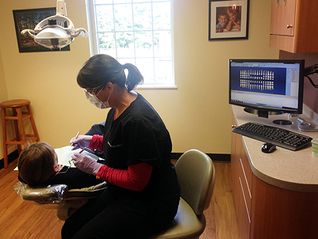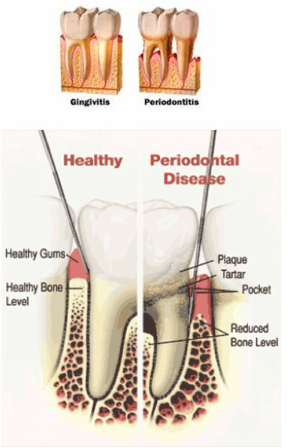
What is a Periodontist?
A Periodontist is a gum specialist who is trained in preventing, diagnosing and treating periodontal disease, performing cosmetic gum procedures and placing dental implants. They receive three years of additional training beyond dental school in these areas. They work in conjunction with the general dentist and other dental specialists to provide comprehensive care and ensure the integrity of each patient’s oral health.
Who needs to see a Periodontist?
Half of American adults have periodontal disease according to the recent findings from the Centers of Disease Control (CDC). In the population over age 65, the prevalence rises to 70%. When periodontal disease is in its early stages it can be managed by your general dentist. Patients with moderate to severe periodontal disease or patients with complex medical histories may be best managed by a partnership with the periodontist and your general dentist. Research has found a correlation between periodontal disease and other chronic disease of aging and this may require a greater level of understanding and expertise by a trained specialist.
A Periodontist is a gum specialist who is trained in preventing, diagnosing and treating periodontal disease, performing cosmetic gum procedures and placing dental implants. They receive three years of additional training beyond dental school in these areas. They work in conjunction with the general dentist and other dental specialists to provide comprehensive care and ensure the integrity of each patient’s oral health.
Who needs to see a Periodontist?
Half of American adults have periodontal disease according to the recent findings from the Centers of Disease Control (CDC). In the population over age 65, the prevalence rises to 70%. When periodontal disease is in its early stages it can be managed by your general dentist. Patients with moderate to severe periodontal disease or patients with complex medical histories may be best managed by a partnership with the periodontist and your general dentist. Research has found a correlation between periodontal disease and other chronic disease of aging and this may require a greater level of understanding and expertise by a trained specialist.
|
Periodontal Disease
Types of Periodontal(Gum) Disease: Gingivitis: This is the mildest type of gum disease and it can cause gums to become red, swollen and bleed easily. This is often caused by improper or inadequate oral hygiene. There is very little or no discomfort at this stage. Gingivitis can be reversed with professional treatment and good home care techniques. Periodontitis: When gingivitis is left untreated it can advance to periodontitis. Periodontitis is an infection that affects the supporting structures of the teeth. It may affect one tooth or all of your teeth. If the infection is left untreated, tooth loss can occur. What causes periodontitis? The main cause of periodontitis is bacteria found in plaque. Over time, the bacteria on your teeth multiply and can spread below the gum line. This bacteria produces toxins that irritate the gums causing inflammation. This inflammation stimulates a chronic inflammatory response in which the body turns on itself and breaks down the tissues and bone that support the teeth. This causes increased pocket depths that can not be reached with your toothbrush and floss and more gum tissue and bone is destroyed as a result. Other contributing factors can include smoking and use of tobacco, genetics, stress, medications, clenching or grinding your teeth, systemic diseases such as diabetes, poor nutrition and obesity. What are the symptoms of periodontitis? Periodontitis may go unnoticed because it is painless. Early signs may include red, swollen and bleeding gums. More advanced signs may include bad breath, increased spacing between your teeth, gums that are receding or pulling away from your tooth and tooth mobility. |

